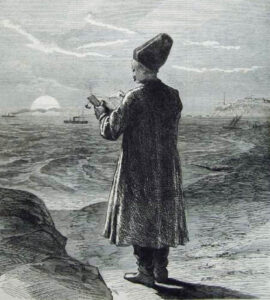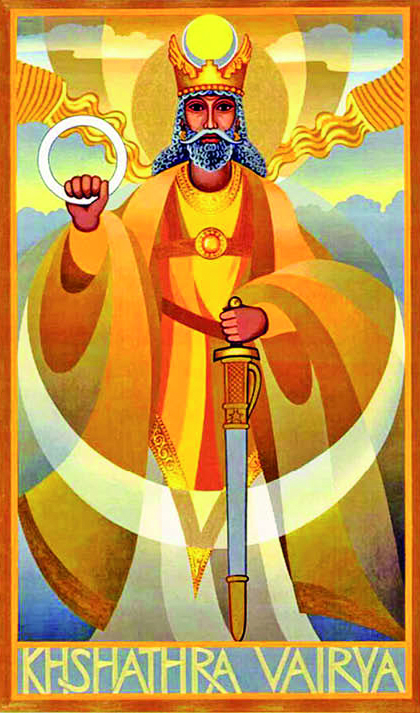 The holy month of Shehrevar will commence from 12th January 2025, as per the Zoroastrian Shehenshahi calendar and 14th January will be observed as Uttarayana or Makar Sankranti or ‘Kite-flying’ day, particularly in Gujarat. During this festival, people savour Undhiyu which is tasty mix of winter vegetables and Chikki made with sesame seeds, peanuts and jaggery.
The holy month of Shehrevar will commence from 12th January 2025, as per the Zoroastrian Shehenshahi calendar and 14th January will be observed as Uttarayana or Makar Sankranti or ‘Kite-flying’ day, particularly in Gujarat. During this festival, people savour Undhiyu which is tasty mix of winter vegetables and Chikki made with sesame seeds, peanuts and jaggery.
The term Uttarayaṇa or Uttarayanam is derived from two different Sanskrit words – uttaram (North) and ayanam (movement) – thus indicating the northward movement of the Sun. There is a common misconception that Makara Sankranti marks the beginning of Uttarayana. The fact is, every year sidereal and tropical equinoxes slide by fifty seconds due to axial precession causing Makara Sankranti to slide. The actual Uttarayana occurs a day after the winter solstice, around 21st December (Iranian Yalda) when the Sun makes the northward journey. In South India this festival is celebrated as Pongal (meaning to boil or overflow, referring to the traditional dish prepared from the new harvest of rice boiled in milk with jaggery), worshipping Surya or the Sun God.
Shehrevar- The Divinity Of Strength And Power
Shehrevar (Avestan Khshathra Vairya) is the sixth month of the Zoroastrian calendar and represents Ahura Mazda’s ‘desirable dominion’. It is the Amesha Spenta or Archangel presiding over metals and minerals. Shehrevar’s qualities are strength and power and Shehrevar uses both these qualities with Asha (righteously) to bring peace and Ahura Mazda’s ‘desirable dominion’ in this world.
Shehrevar, who is visualized as wearing a battle helmet and wielding a spear and a shield, is the role model for every Zoroastrian in terms of Divine Strength (to do good) and Righteous Power (to the right the wrongs). Peace cannot be ushered by those without power and violence cannot be curbed by the weak. Therefore, strength and power from a Zoroastrian point of view, are positive, as long as both are used righteously.
Righteous Actions As Best Form Of Worship
Khshathra Vairya means ‘Righteous Power’ and represents the ‘Power’ to settle in peace. The Vohu-khashatra Gatha (Vohu = Good and Khashatra = Power or Strength) elucidates the power of doing good deeds. It says: “That man, who performs all his actions as an act of worship through Asha’s Law, is deemed as the best by Mazda Ahura. Those who have been in the past and who are such at present, I shall, with reverence, recall them by name, and shall try to reach their high position by righteous deeds.” This Gatha relates to Yasna 51 wherein Zarathustra elucidates that excellence comes through righteous actions performed as acts of worship. Thus, righteous actions are the best form of worship and such actions reap strength and empowerment.
Sahrewar is a Pahlavi term for ‘the best rule’, which comes with Divine Strength and Righteous Power. Shahenshas or kings of ancient Iran were all inspired by this Divinity and ruled their vast kingdom on the principles of justice and equality. Kings like Cyrus the Great and Queens like Pourandokht are classic examples. Evil cannot be resisted by a weak body or a weak mind. Therefore, from a Zoroastrian point of view weakness and disempowerment are looked down upon as an affliction of evil. In Zoroastrian theology, Khshathra Vairya is a cosmic prototype for the world of Ahura Mazda, i.e. heaven, which would be peaceful and ruled by just kings using their strength and righteous power.
Importance Of Metals And Minerals
During Achaemenian times, fire alters were made of stone, evident from the ruins, near Naqsh-eRustom in South Iran. in India, Parsis enthrone the Holy Fire on a metal afarganyu or vase, referring to as ‘Atash Patshah’ or the fire king, and it’s only appropriate that the holy fire is enthroned on a metal afarganyu symbolizing Shehrevar’s strength and power.
The human body requires various metals and minerals, albeit in small quantities, to stay healthy and strong. For example, the lack of iron can make one anaemic or feel weak, while lack of calcium leads to osteoporosis or weakening of the bones. According to the Shahnameh or the Book of Kings, it was Shah Jamsheed who discovered the use of metals during the Peshdadian dynasty. Gold and silver were used extensively during Achaemenid times, even Greek historians wrote that the roofs of homes in the inner most city of old Ecbatana (modern Hamadan – summer capital during Achaemenid rule) were tiled with gold and silver.
The Pahlavi book, Zarathushtnameh, states that after receiving Divine Revelation from Ahura Mazda, when Zarathushta was counselled by each of the Amesha Spenta, Shehrevar’s message to mankind, through Zarathustra was to: “Use metals wisely”. In other words, use metals for peaceful and progressive purposes, not for violence.
Feast Of Sharivargan
Traditionally, Sharivargan or the parab of Shehrevar would be celebrated in ancient Zoroastrian Iran by lighting fires (fire is energy and therefore a source to good health, strength and the warmth of friendship) and reciting the Gatha, especially Yasna 51. The day would also be spent helping empower the weak and doing general acts of charity and kindness. When priests offer baj they use metal rods for ritual power. During higher liturgical ceremonies, the water that is ritually purified and energized and poured back into the Agyari well from which it is drawn, is collected in a metal karasyo or tumbler.
Many believe that Cyrus the Great was born on Roj Shehrevar of Mah Shehrevar (though this cannot be historically proved) according to the calendar of that time. Today, Iranians (both Zoroastrians and Muslims) perceive Cyrus as a father figure and therefore many of them observe the fourth day of Shehrevar as ‘Father’s Day’.
- Celebrate A Joyful Week Of Love - 8 February2025
- Celebrating Mid-Winter - 1 February2025
- Commemorating The ‘Holy Book’ Of India - 25 January2025
